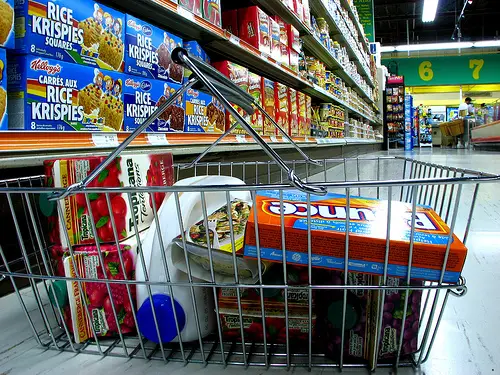 This is final post in my three-part series outlining essential tips that the Penzo household follows for keeping our grocery bills under control.
This is final post in my three-part series outlining essential tips that the Penzo household follows for keeping our grocery bills under control.
Of course, there are many methods for cutting the grocery bill that go way beyond shopping at discount grocery stores, taking advantage of in-store specials, and using coupons. However, there are several areas that I tend to focus on in order to ensure my grocery costs stay as low as possible. They include:
1. Dinner Menu Planning
2. Grocery Shopping Strategies
3. Pantry Management
I covered dinner menu planning and shopping strategies in Parts 1 and 2 of this series, respectively.
Today, I want to cover the oft-neglected art of pantry management. With that mind, here are six key pantry management tips that will result in significant annual savings to your food bill:
- Don’t exceed your pantry’s effective capacity. You know, I’ve been in houses where the kitchen pantry is so loaded up with food products that it is a wonder that the residents can find anything at all. How can you tell when your pantry has reached its effective capacity? It’s simple: Use your common sense. Remember, the key term is “effective.” If cans and boxes are piled up in such a way that you’re not sure of everything that is hiding in there, then you’ve exceeded your pantry’s effective capacity.
- Organize your pantry. An organized pantry is a happy pantry! When making the shopping list, an organized pantries make surveying a breeze. They also prevent inadvertent purchases of items that you already have on hand.
- Audit your pantry. Just because you’re not a certified public accountant doesn’t mean you can’t do an audit. Every few months, take an hour or two to reorganize and clean your pantry. Take stock of everything you have. Note any items that are running low in quantity so you can try to take advantage of future specials and avoid having to buy them at the last minute. Also, be sure to select dinners for your next multi-week dinner menu that utilizes items that are nearing their expiration or use-by dates. Just remember, as I’ve noted here many times before, some items actually remain edible long after they pass their expiration and use-by dates.
- Rotate your pantry stock. Rotating your stock after each shopping trip helps to minimize the number of items in your pantry that have to be tossed because of a surpassed expiration date.
- Don’t forget the freezer! If you think about it, your freezer is a pantry too — it’s just a lot colder! So manage it like a traditional pantry. This is especially important considering that potential freezer losses tend to be more costly than pantry food losses.
- Properly store your frozen meat. Properly-stored frozen meat helps avoid freezer burn for up to four months — and sometimes even longer. You can avoid freezer burn by never storing your meat in the butcher’s packaging. Instead, rewrap it and store it in freezer bags marked with the date the meat was frozen.
That’s all there is to it, folks!
As you can see, with just a little commitment, it’s not difficult to see a significant reduction in your monthly grocery bill.
By utilizing dinner menu planning, prudent shopping strategies, and sound pantry management, I promise it won’t be long before you see real results.
Photo Credit: Matt MacGillivray
(This is an updated version of an article that was originally posted on March 28, 2009.)

Great series, Len! I wanted to mention another strategy related to pantry management, which is to pull nonperishable foods when they are still several months away from their “best by” date, and donate them to your local food pantry. It doesn’t save money, but it’s an easy way to help out those who really need it. I check and donate items that are at least 6 months away from expiring (in case it takes a few weeks to get distributed).
Hey, that’s a really nice bonus tip, Sarah. Thanks for sharing that with my readers! 🙂